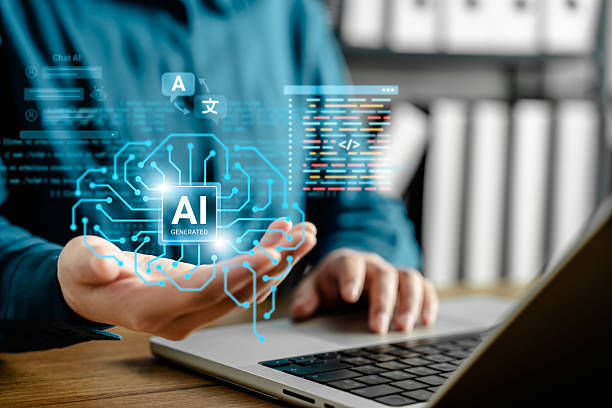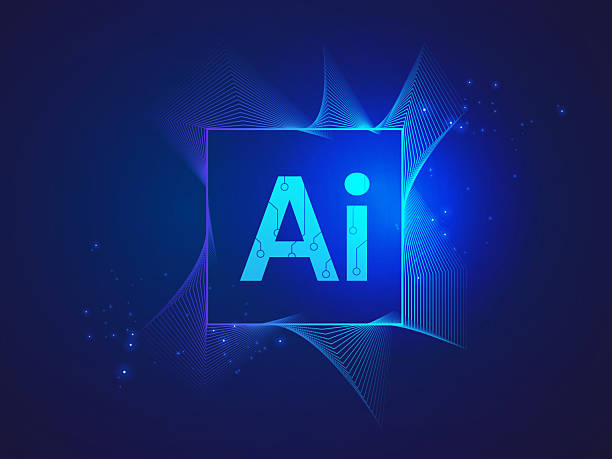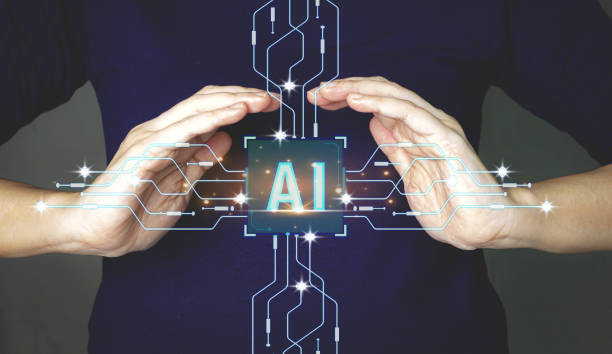What is an Artificial Intelligence Robot and How Does It Work?

An Artificial Intelligence Robot is a #robot that, using artificial intelligence algorithms, is able to perform tasks that normally require human intelligence.
These tasks can include learning, reasoning, problem solving, pattern recognition, natural language understanding, and decision-making.
AI robots use sensors to receive information from the environment and then process this information to show the appropriate reaction.
This reaction can include physical movement (in the case of physical robots) or providing text or voice responses (in the case of virtual robots or chatbots).
The basis of the AI robot is based on Machine Learning.
In this method, the robot, by receiving training data, learns the patterns and relationships in the data and then uses this knowledge to predict or make decisions about new data.
There are different types of machine learning algorithms, each of which is suitable for a specific type of task.
For example, Neural Networks are very effective for pattern and image recognition, while Decision Trees algorithms are more suitable for decision-making based on a set of rules.
In short, an AI robot, by combining sensors, artificial intelligence algorithms, and training data, is able to perform tasks that previously only humans could do.
Does your current website convert visitors into customers, or does it scare them away? Solve this problem forever with professional corporate website design by Rasaweb!
✅ Create a powerful reputation and branding
✅ Attract target customers and increase sales
⚡ Get free consultation now!
Types of Artificial Intelligence Robots: An Overview of Different Applications

Artificial intelligence robots come in different types, each designed for specific applications.
One of the common classifications is based on the physical form of the robot.
In this classification, physical robots (such as industrial robots, home robots, and military robots) and virtual robots (such as chatbots, voice assistants, and software robots) can be distinguished.
Industrial robots are usually used to perform repetitive and dangerous tasks in production lines.
Home robots are designed to perform everyday tasks such as cleaning and caring for the elderly.
Military robots are used in various fields, including reconnaissance, bomb disposal, and automated weapons.
Virtual robots, also known as smart assistants, such as Siri, Alexa, and Google Assistant, interact with users and answer their questions using natural language processing.
These robots can perform various tasks, including setting reminders, playing music, providing information, and controlling smart home devices.
In addition, artificial intelligence robots are also used in other fields such as medicine (for disease diagnosis and surgery), education (for providing personalized education), and customer service (for answering questions and solving customer problems).
Choosing the right type of artificial intelligence robot depends on the type of task and the specific needs of the application.
Advantages and Disadvantages of Artificial Intelligence Robots: A Realistic View

Artificial intelligence robots have many advantages that have led to their increasing use in various industries.
One of the most important advantages is increased productivity and reduced costs.
Robots can work 24 hours a day without the need for rest and reduce human errors.
Also, artificial intelligence robots can be used in dangerous and inaccessible environments for humans.
Another advantage is the ability to process large amounts of data and extract useful patterns, which can help in better and faster decision-making.
However, artificial intelligence robots also have disadvantages that should be considered.
One of the most important disadvantages is the high cost of designing, building, and maintaining robots.
In addition, robots may cause the loss of human jobs, especially in industries where repetitive and routine tasks are performed.
There are also concerns about the security and privacy of information, as robots can access sensitive information.
Another disadvantage is the dependence on data, meaning that robots can only perform as well as the data they have been trained with, and they may have problems when faced with new situations.
In general, the use of artificial intelligence robots should be done with consideration of their advantages and disadvantages and with a responsible and ethical approach.
| Advantages | Descriptions |
|---|---|
| Increased productivity | Robots can work 24 hours a day and reduce human errors. |
| Reduced costs | Robots do not need rest and benefits. |
| Working in dangerous environments | Robots can work in environments that are inaccessible to humans. |
| Processing large data | Robots can process large amounts of data and extract useful patterns. |
Challenges of Developing Artificial Intelligence Robots: Obstacles Ahead
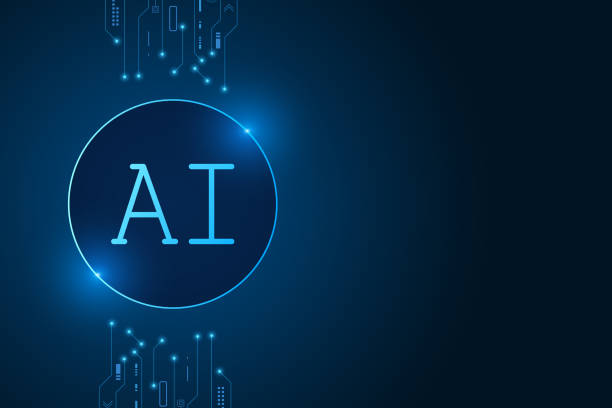
The development of artificial intelligence robots faces numerous challenges.
One of the most important challenges is collecting and processing high-quality training data.
Robots need a lot of data to learn and perform their tasks, but collecting and labeling high-quality data can be time-consuming and costly.
Another challenge is designing artificial intelligence algorithms that can effectively deal with complex and unpredictable situations.
Robots must be able to make decisions in different situations and adapt to environmental changes.
Another important challenge is the ethical and legal issues related to the use of artificial intelligence robots.
Laws and regulations should be enacted for the use of robots in various fields to prevent misuse and harm to humans.
Also, special attention should be paid to issues related to privacy and data security.
In addition, there are also technical challenges, such as improving the performance of robots in harsh conditions, reducing energy consumption, and increasing battery life.
In general, the development of artificial intelligence robots requires the effort and cooperation of various experts, including engineers, computer scientists, ethics experts, and legislators.
Research shows that 80% of customers trust companies with professional websites more. Does your current site build this trust?
With Rasaweb’s corporate website design services, solve the problem of customer distrust and weak online image forever!
✅ Create a professional image and increase customer trust
✅ Attract more sales leads and grow your business
⚡ Get free consultation
The Future of Artificial Intelligence Robots: What Should We Expect?

The future of artificial intelligence robots is very bright and full of potential.
Recent advances in the fields of artificial intelligence and robotics have made it possible to build robots with much more advanced capabilities than today.
It is expected that in the near future, robots will play a more important role in our daily lives and will be used in various fields, including medicine, education, transportation, and manufacturing.
Surgical robots can perform complex surgeries with greater accuracy, teacher robots can provide personalized education, driver robots can increase transportation safety and efficiency, and worker robots can improve production efficiency.
In addition, robots are expected to be developed with higher emotional intelligence and be able to interact more effectively with humans.
Robots can recognize human emotions and respond to them appropriately.
This can help improve human-robot relationships and increase trust in robots.
However, it should be noted that the development of artificial intelligence robots should be done with consideration of ethical and social issues to prevent misuse and harm to humans.
In general, the future of artificial intelligence robots is full of exciting opportunities, but it should be viewed with caution and responsibility.
How to Build an Artificial Intelligence Robot: A Step-by-Step Guide
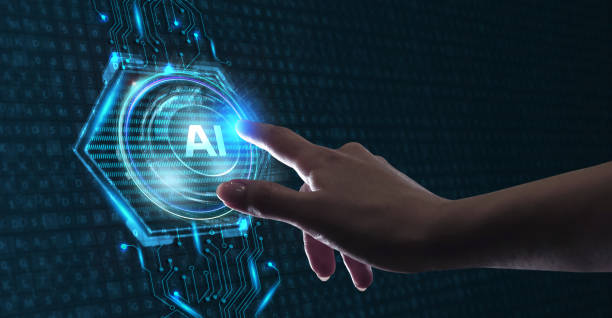
Building an artificial intelligence robot can be a challenging and exciting project.
The first step is to determine the purpose and application of the robot.
You should specify what task your robot will perform and what capabilities it will have.
Then, you need to prepare the necessary hardware components, such as microcontroller, sensors, motors, and battery.
Choosing the right microcontroller depends on the complexity of the project and the computational needs of the robot.
Sensors are used to receive information from the environment, and motors are used to move the robot.
After preparing the hardware components, you need to develop the required software.
This software includes artificial intelligence algorithms, hardware control programs, and user interface.
To develop the software, you can use various programming languages such as Python, C++, and Java.
Python is a popular choice due to its simplicity and the availability of numerous artificial intelligence libraries.
After developing the software, you need to load it onto the microcontroller and test the robot.
At this stage, you may need to debug and optimize the code.
Finally, you can showcase your robot and use it to perform the desired tasks.
Case Study: Successful Applications of Artificial Intelligence Robots in Industry
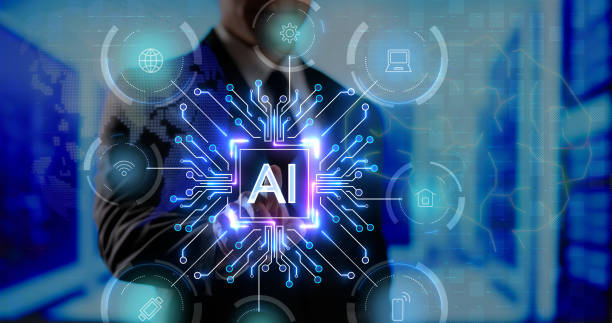
Artificial intelligence robots have had successful applications in various industries.
One of the most prominent examples is the use of robots in the automotive industry.
Welding, painting, and assembly robots are used in car production lines, improving productivity by increasing speed and accuracy.
Also, quality inspection robots use advanced cameras and sensors to identify potential defects and prevent defective products from leaving the production line.
In the logistics industry, warehouse robots and cargo carriers are widely used.
These robots use navigation systems and artificial intelligence to find their way in the warehouse and move goods quickly and accurately.
In the medical industry, surgical robots help doctors perform complex surgeries with greater accuracy and reduce potential risks.
Pharmacist robots can also package and distribute drugs with high accuracy and speed.
These applications show that artificial intelligence robots can help improve efficiency, reduce costs, and increase quality in various industries.
| Industry | Application | Advantages |
|---|---|---|
| Automotive | Welding, Painting, Assembly | Increased speed and accuracy, improved productivity |
| Logistics | Warehousing, Cargo transportation | Fast and accurate movement of goods |
| Medical | Surgery, Pharmacy | Increased surgical precision, accurate drug distribution |
The Impact of Artificial Intelligence Robots on the Labor Market: Threat or Opportunity?

The impact of artificial intelligence robots on the labor market is a topic of debate.
Some believe that robots will lead to the loss of human jobs and pose a threat to the labor market.
This concern is especially greater for jobs that involve repetitive and routine tasks.
Robots can perform these tasks with greater speed and accuracy, reducing the need for human labor.
However, others believe that robots create new opportunities in the labor market.
Robots can perform tasks that are dangerous or difficult for humans, allowing humans to focus on more creative and complex tasks.
Also, the development, construction, and maintenance of robots require new specialists and create new jobs.
In general, the impact of artificial intelligence robots on the labor market is complex and depends on how this technology is managed and the policies of governments.
To minimize the negative effects and capitalize on opportunities, there is a need to invest in education and training of human resources and the development of new skills.
Are you disappointed with the low conversion rate of your online store? Rasaweb turns your online store into a powerful tool for attracting and converting customers!
✅ Significantly increase the conversion rate of visitors to buyers
✅ Unmatched user experience to increase customer satisfaction and loyalty⚡ Get a free consultation from Rasaweb!
Safety Tips for Using Artificial Intelligence Robots: How to Prevent Dangers?

Using artificial intelligence robots can pose risks, especially if safety tips are not followed.
One of the most important tips is to properly train employees who work with robots.
Employees should be familiar with how robots work, potential risks, and methods of preventing them.
Also, proper safety equipment should be used, such as guards, motion detection sensors, and emergency stop systems.
Robots should be inspected and repaired regularly to prevent technical defects and accidents.
Robot software should be updated continuously to prevent security vulnerabilities.
Also, special attention should be paid to issues related to data privacy and unauthorized collection and use of data should be prevented.
Finally, laws and regulations should be enacted for the use of robots to prevent misuse and harm to humans.
Following these safety tips can help reduce risks and increase safety in the use of artificial intelligence robots.
Artificial Intelligence Robots and Ethics: Ethical Considerations in Design and Use

Artificial Intelligence Robots, with their increasing progress, raise important ethical issues that require careful attention and consideration.
One of the most important ethical considerations is accountability.
If an Artificial Intelligence Robot makes a mistake or causes damage, who will be responsible? Is it the robot manufacturer, the programmer, the user, or the robot itself? These questions require clear and legal answers.
Another ethical consideration is privacy.
Artificial Intelligence Robots can collect and process a lot of information, including users’ personal information.
It must be ensured that this information is kept secure and not used for unauthorized purposes.
Also, attention should be paid to issues related to discrimination and justice.
Artificial Intelligence Robots should not make discriminatory decisions based on race, gender, religion, or other irrelevant factors.
For example, in hiring workers, an Artificial Intelligence Robot should not unfairly favor a particular group.
Artificial Intelligence Robots should be designed to act impartially and fairly.
Observing these ethical considerations can help ensure the responsible and ethical use of Artificial Intelligence Robots.
Frequently Asked Questions
| Question | Answer |
|---|---|
| What is an artificial intelligence robot? | A robot that uses artificial intelligence capabilities to understand the environment, reason, learn, and make decisions to perform complex tasks independently. |
| What is the main difference between a regular robot and an artificial intelligence robot? | Artificial intelligence robots can learn and adapt to their environment, while regular robots usually operate based on fixed and predetermined plans. |
| In what fields are artificial intelligence robots used? | In fields such as industry (production lines), medicine (robotic surgeries), services (customer support, smart vacuum cleaners), exploration (space and underwater), and entertainment. |
| How do artificial intelligence robots learn? | They acquire new skills through machine learning and deep learning algorithms, by analyzing large data and identifying patterns. |
| Can artificial intelligence robots have emotions? | Currently, no. They can identify or simulate emotions, but they do not have a real experience of emotions like humans. |
| What are the most important advantages of using artificial intelligence robots? | Increased productivity, reduced human error, performing dangerous or repetitive tasks, and providing innovative and efficient services. |
| What challenges exist in the development of artificial intelligence robots? | The need for large and high-quality data, the complexity of algorithms, ethical issues, cybersecurity, and the high cost of research and development. |
| Are artificial intelligence robots dangerous to humans? | By following safe design principles and ethical regulations, no. Concerns are more related to social and economic impacts such as changes in the labor market. |
| What is an example of an artificial intelligence robot in everyday life? | Smart vacuum cleaners (such as Roomba) that automatically map and clean the house, or smart voice assistants (such as Siri and Alexa). |
| How is the future of artificial intelligence robots predicted? | They are expected to become smarter, more autonomous, and capable of more complex interaction with humans, and play a more prominent role in industry, medicine, transportation, and everyday life. |
And other services of Rasa Web Advertising Agency in the field of advertising
Smart linking: A combination of creativity and technology to attract customers through custom programming.
Smart digital branding: Professional optimization to increase click-through rates by customizing the user experience.
Smart brand identity: An effective tool to attract customers with a content-driven SEO strategy.
Smart custom software: A combination of creativity and technology to analyze customer behavior using real data.
Smart sales automation: A creative platform to improve customer behavior analysis with an attractive user interface design.
And over a hundred other services in the field of internet advertising, advertising consulting, and organizational solutions
Internet advertising | Advertising strategy | Advertorial
Resources
Smart Chatting Robots From Aya to Today’s Aya
,Introductory Training of Artificial Intelligence – Concepts and Applications
,Artificial Intelligence Robot and Its Applications
,What is Artificial Intelligence?
? Rasaweb Afrin, by providing comprehensive digital marketing services, from multilingual website design and SEO to content marketing and social networks, leads your business to new horizons of success. Contact us for consultation and improvement of your online presence.
📍 Tehran, Mirdamad Street, next to the Central Bank, South Kazeroun Alley, Ramin Alley No. 6
“`

